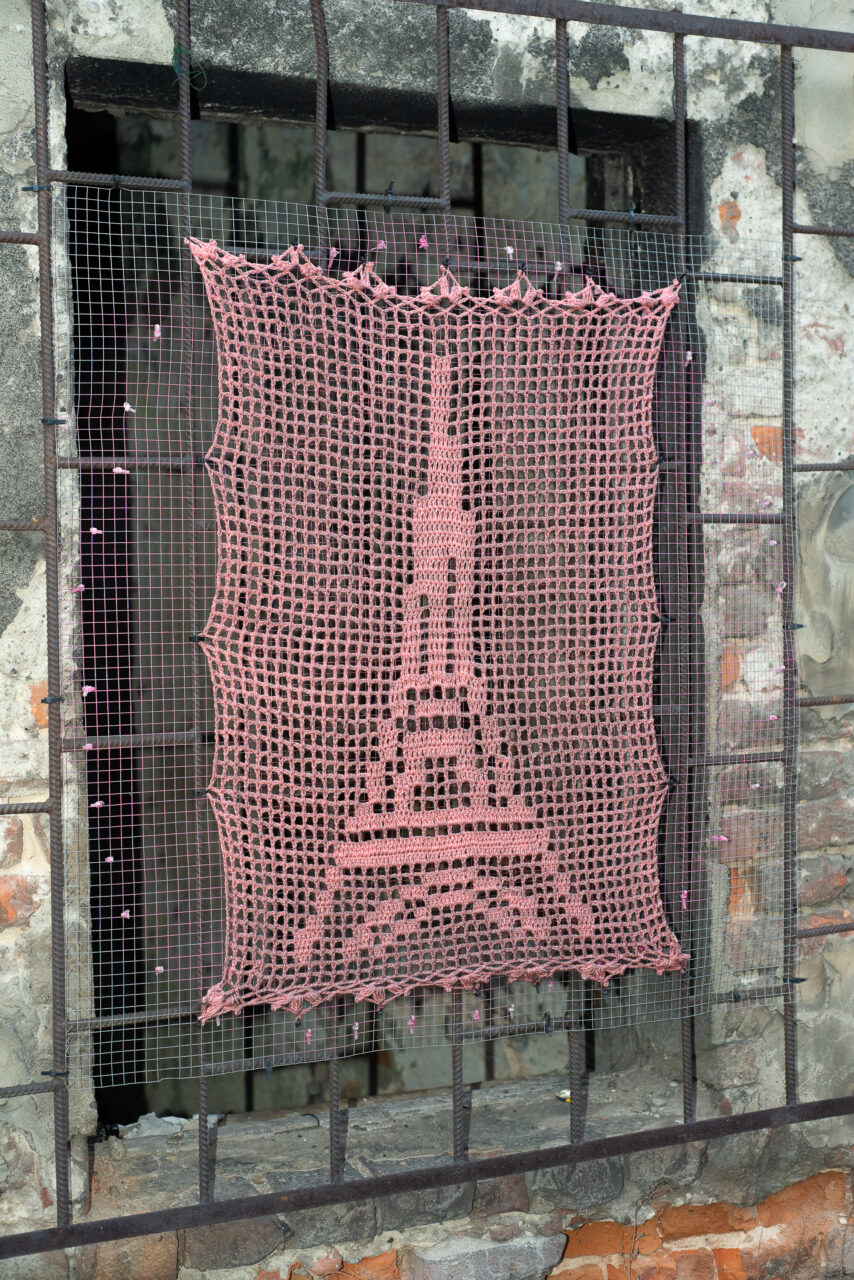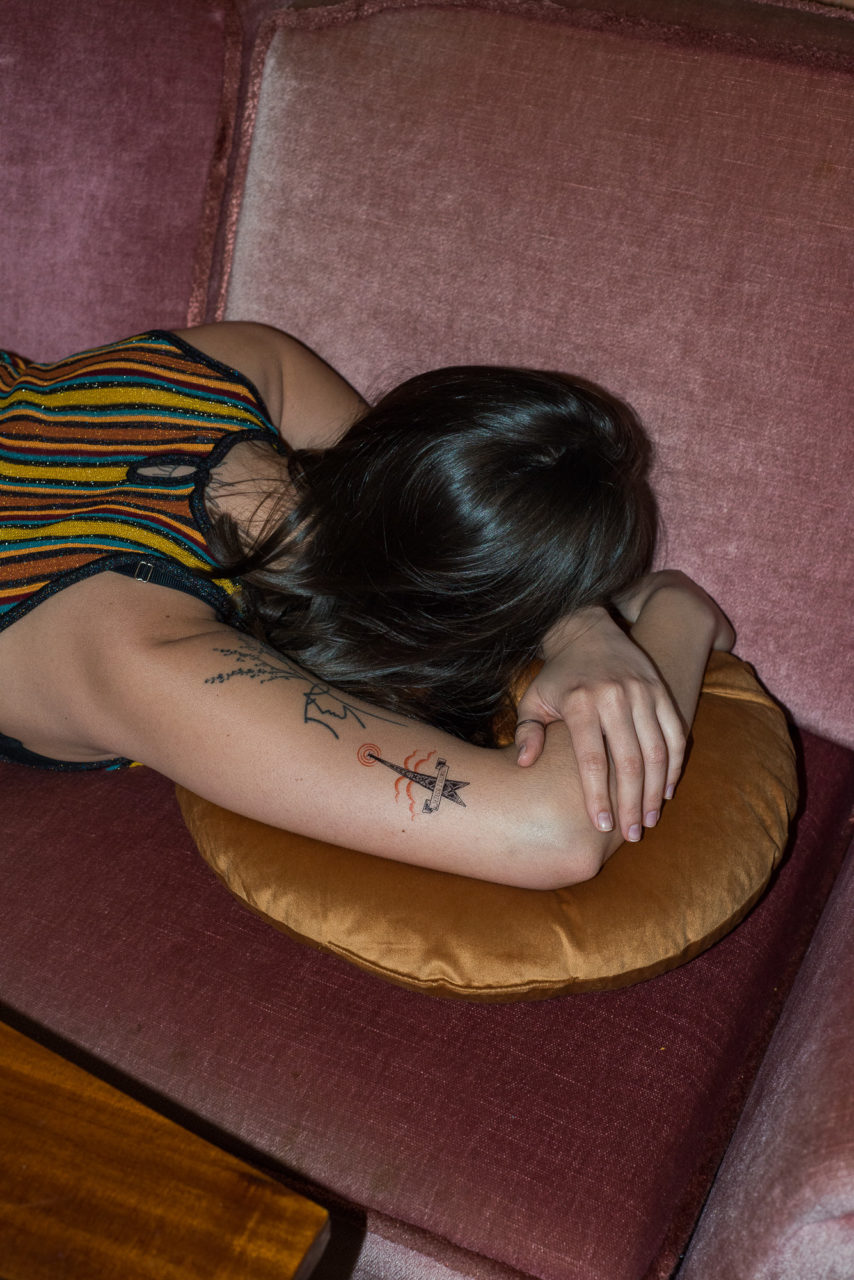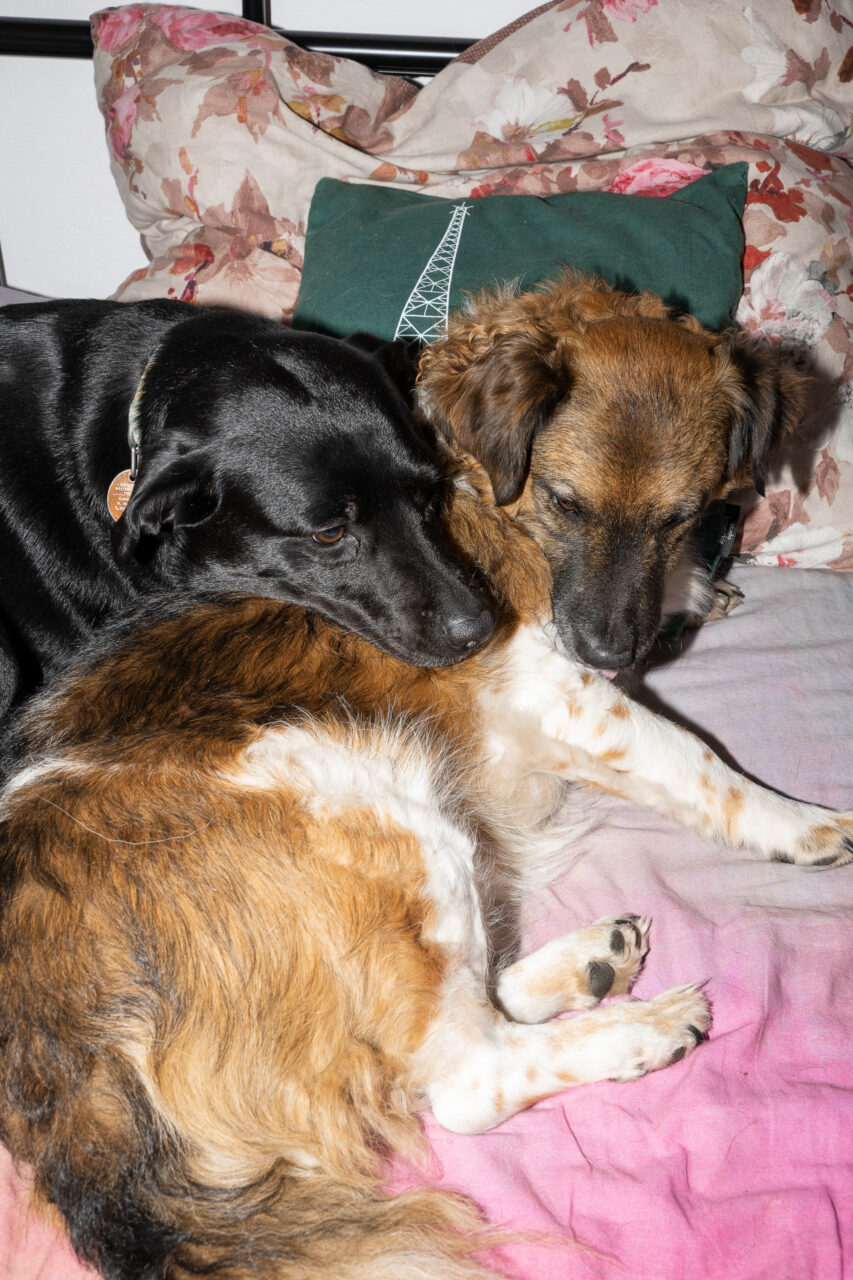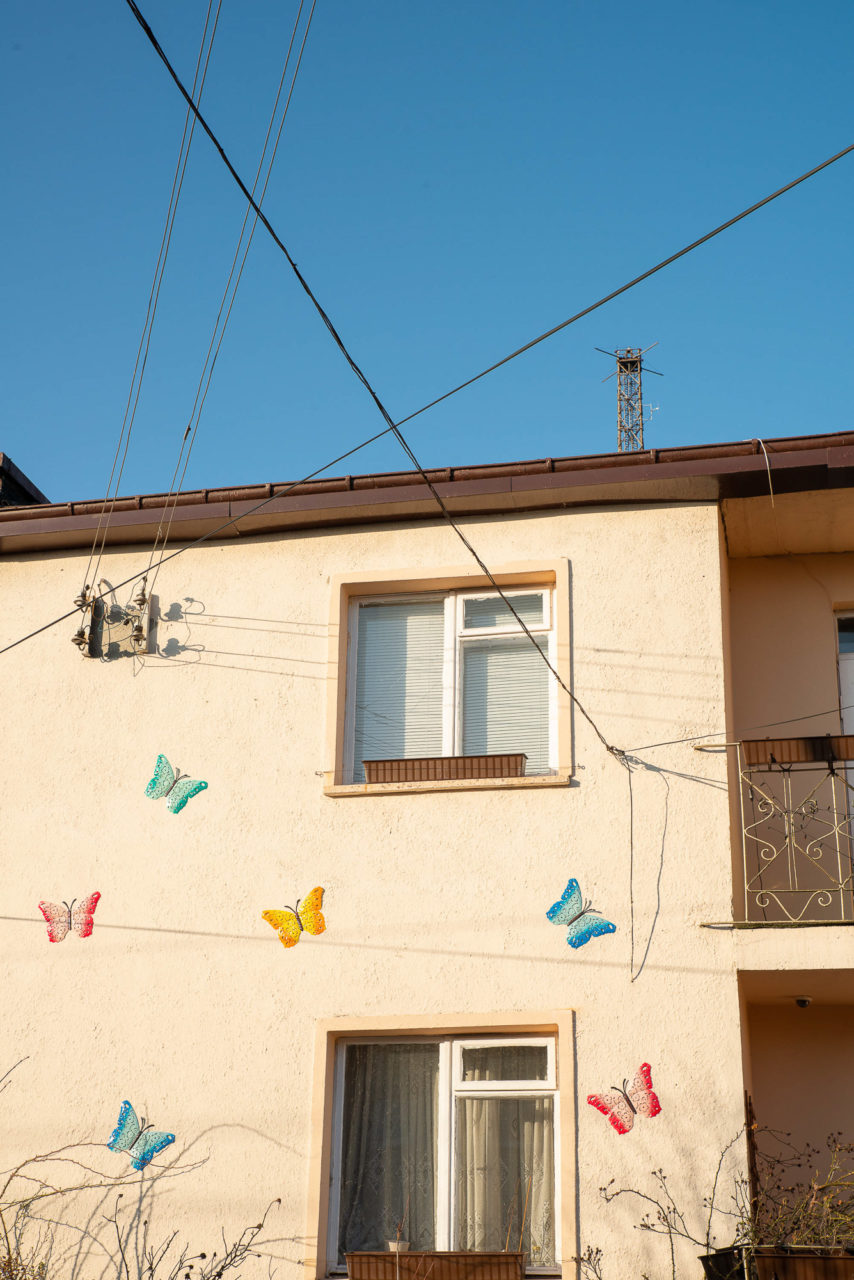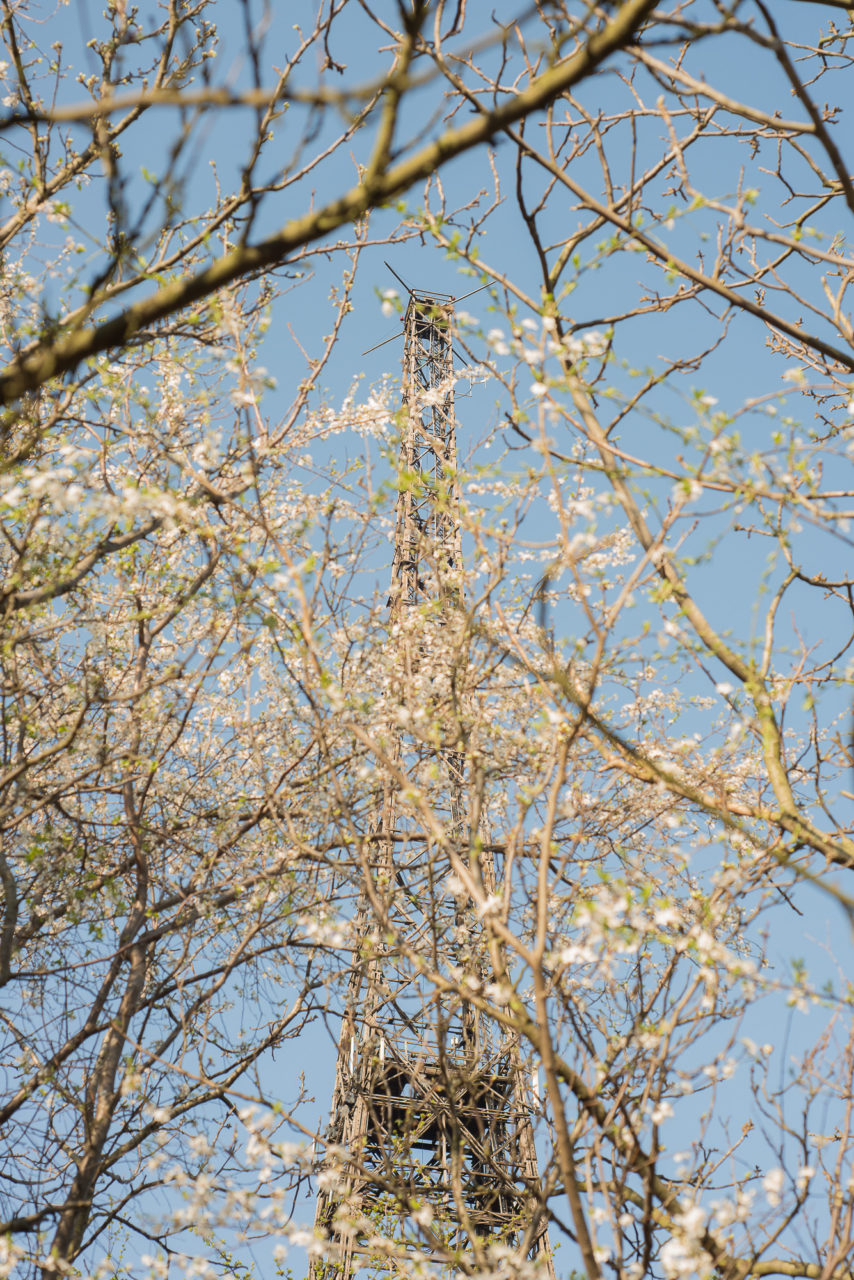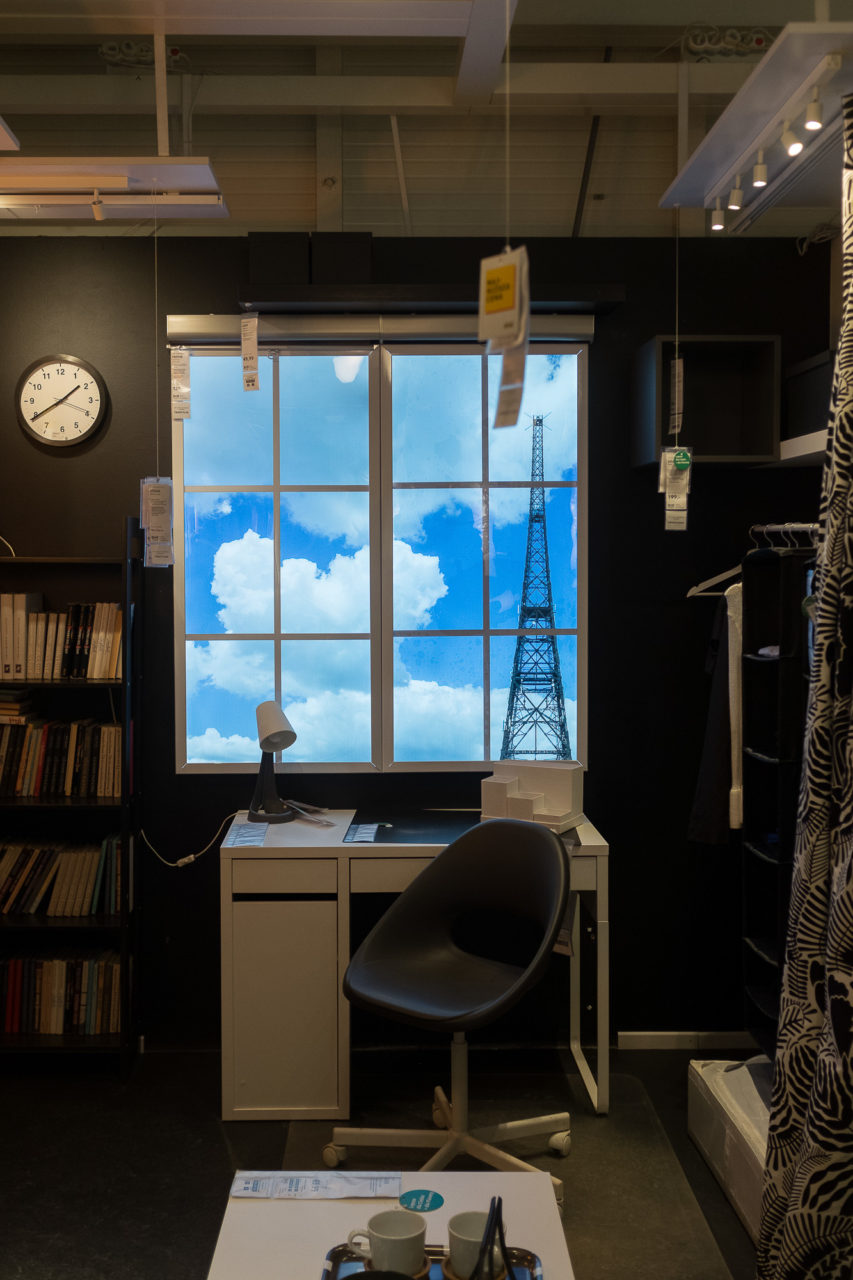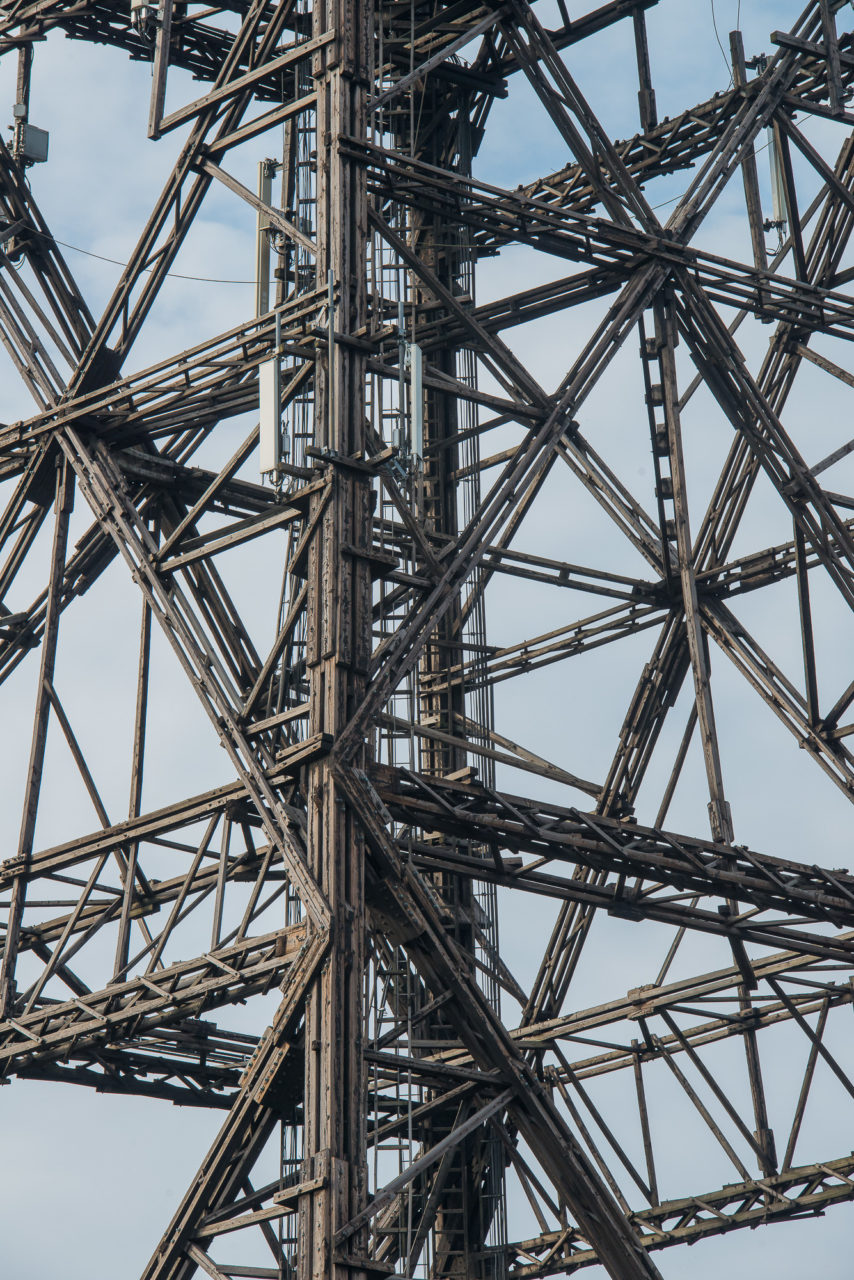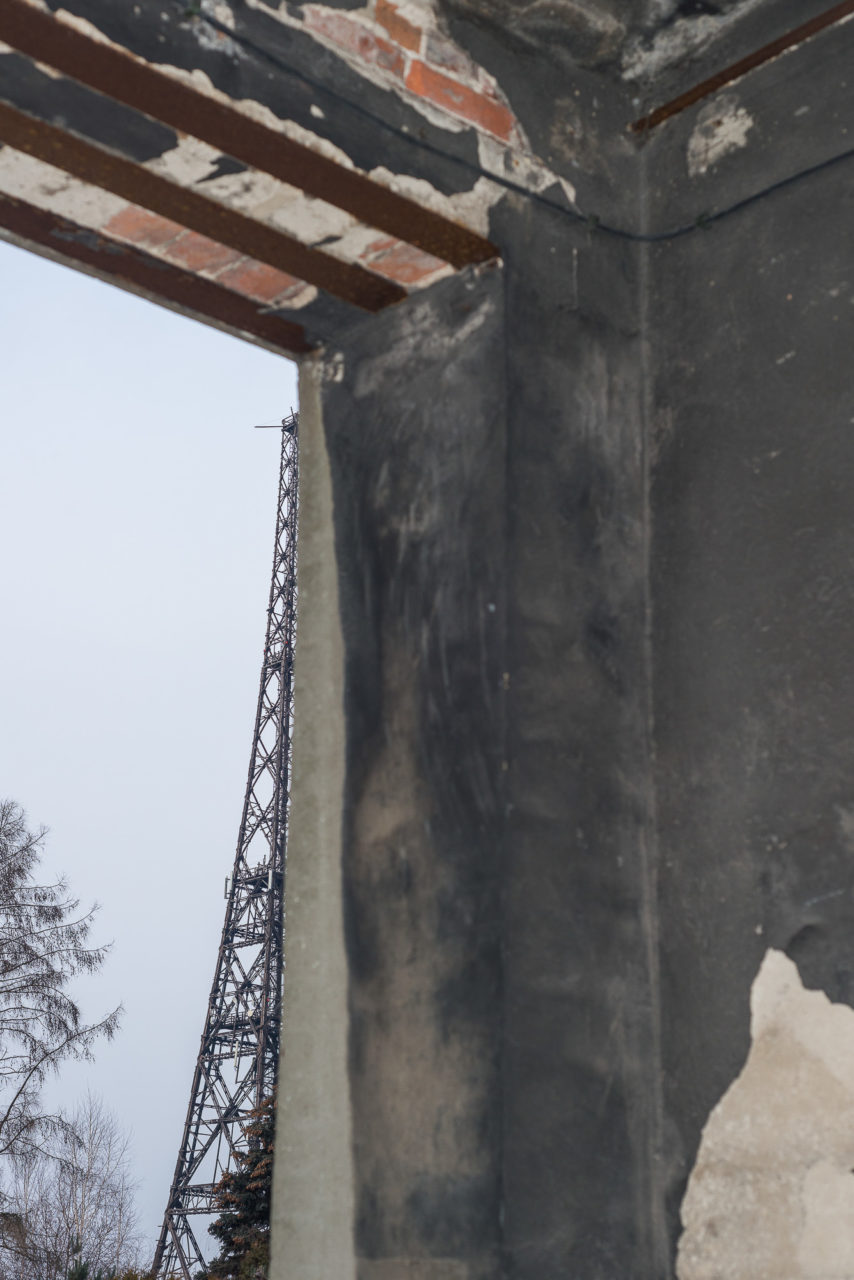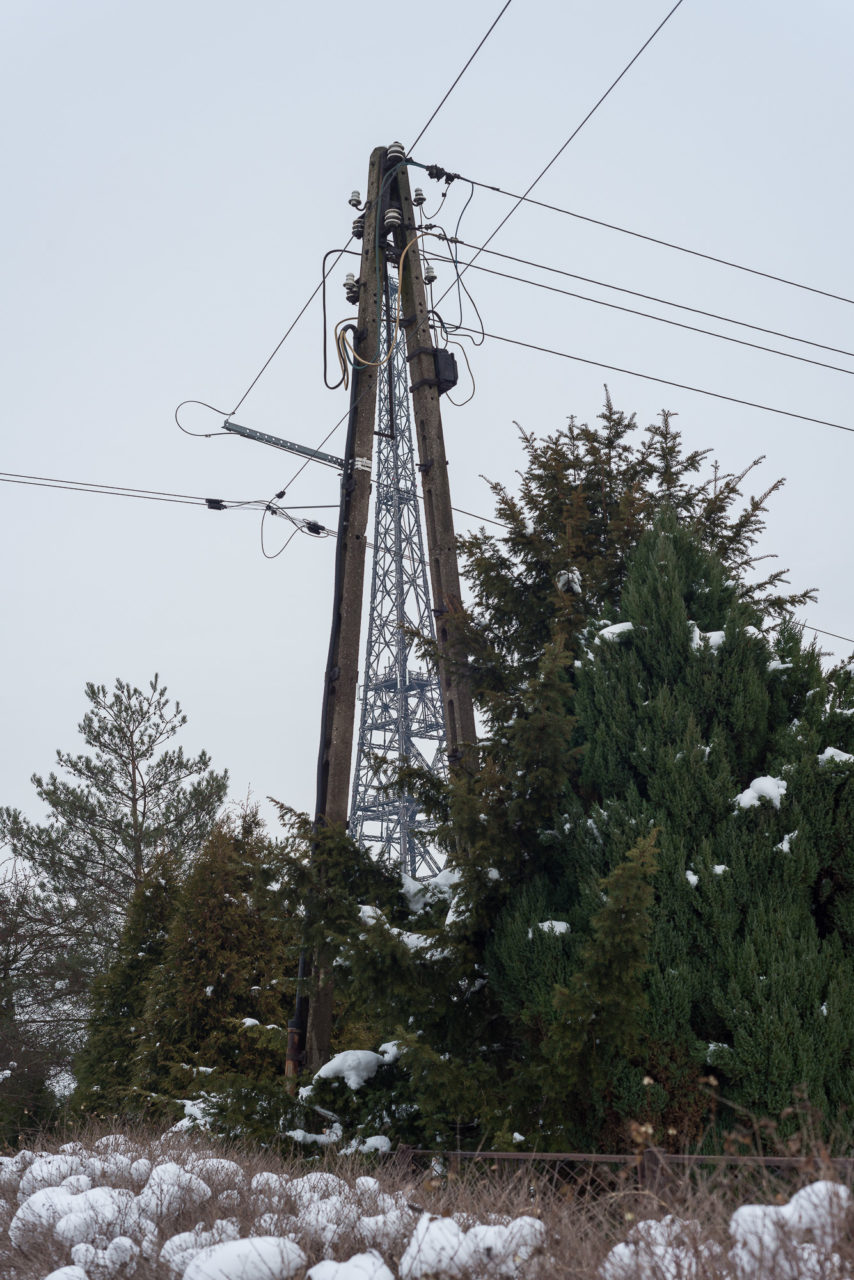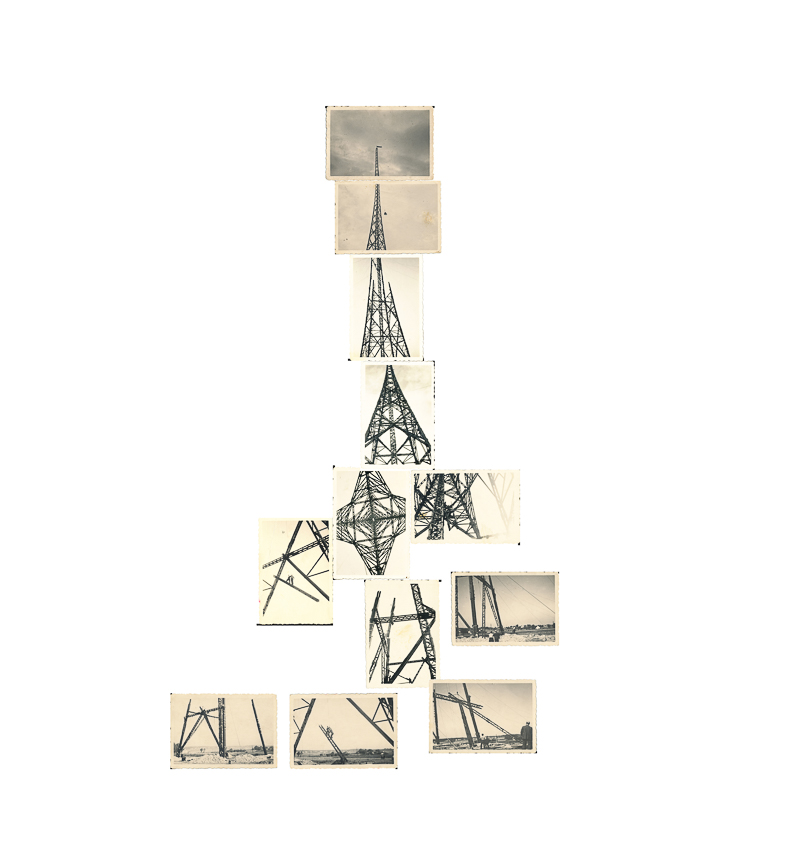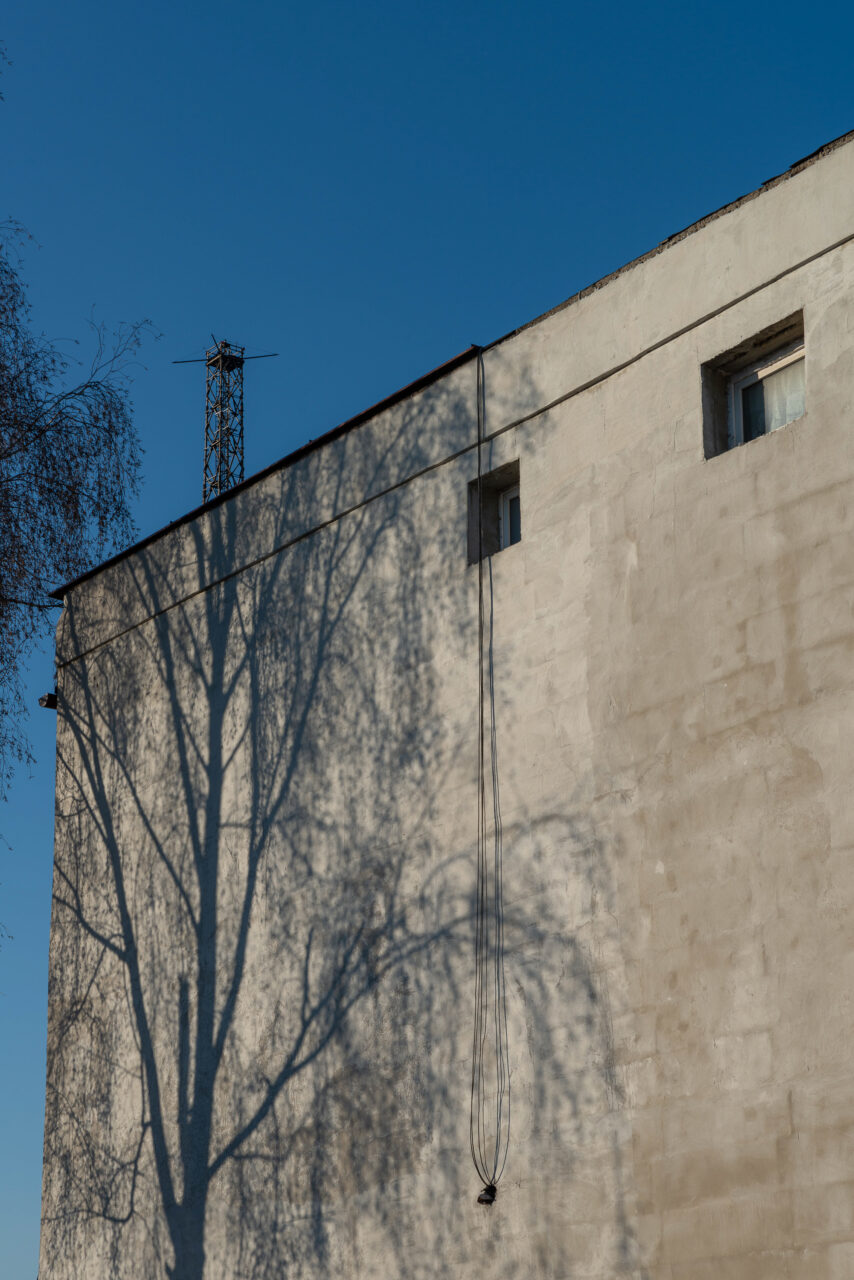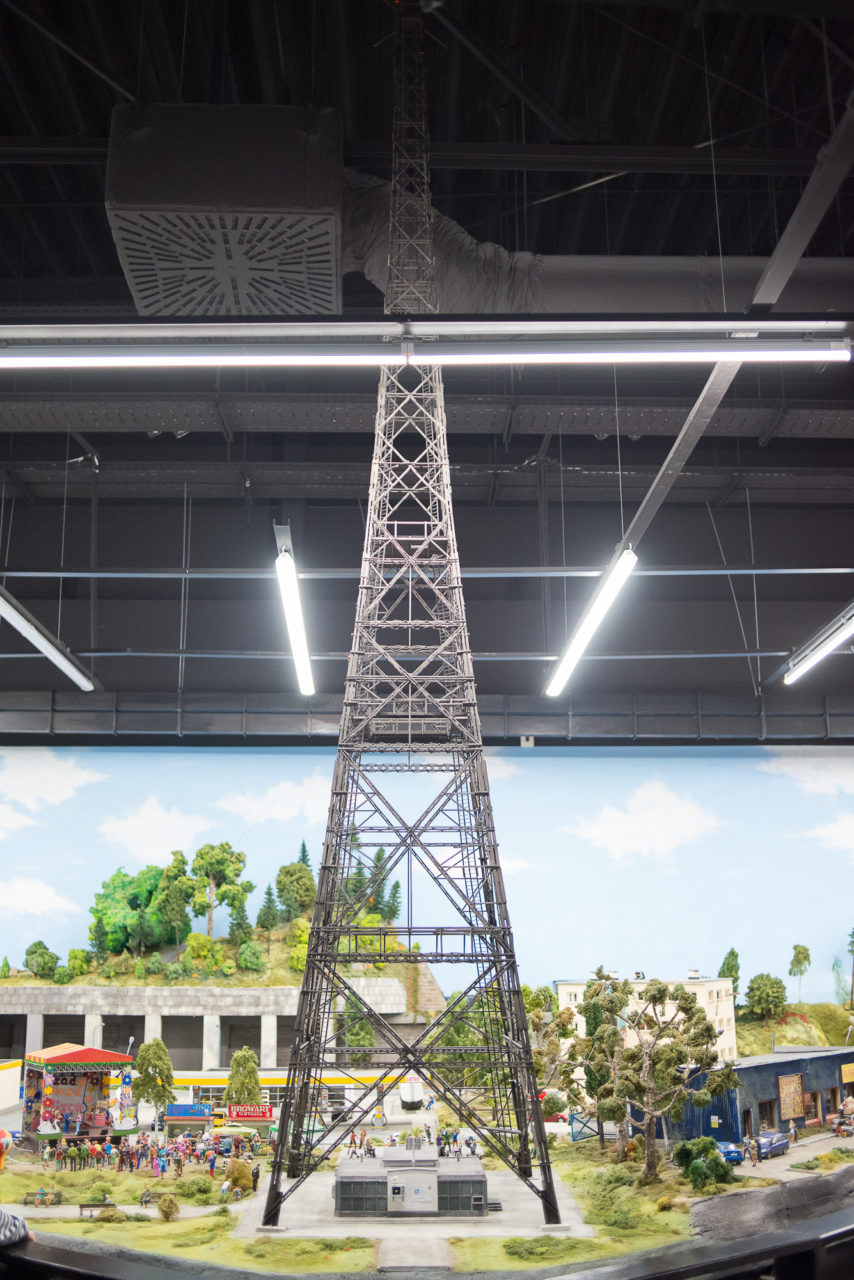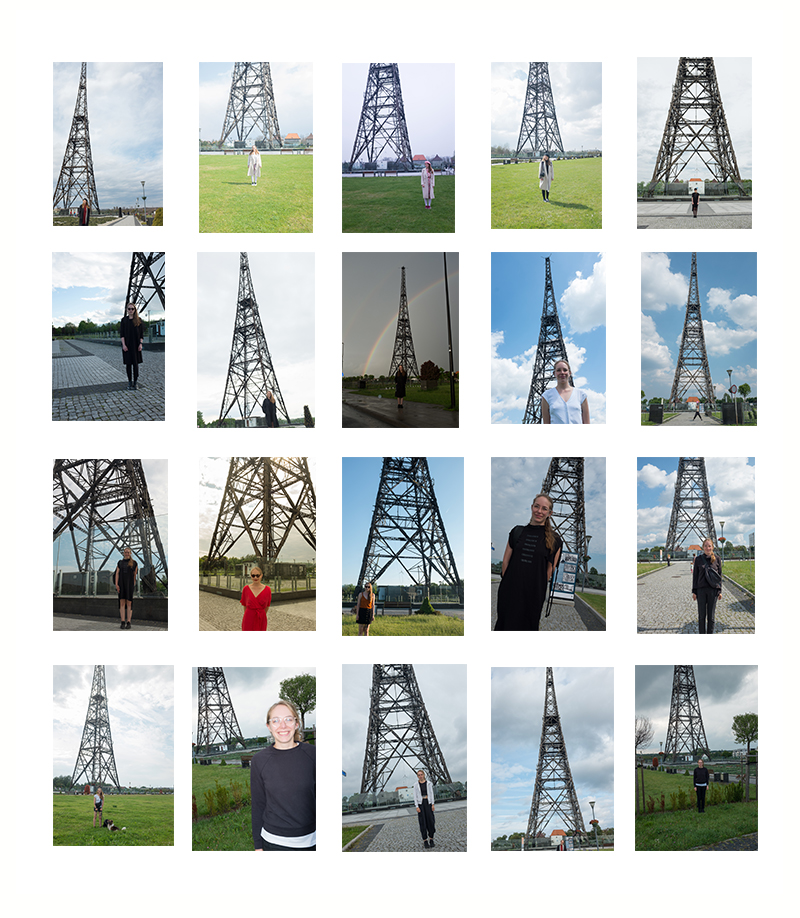ENG / PL
Made of larch wood, the mast of the Gliwice radio station was built in 1935. Connected by more than sixteen thousand brass screws, it is still the tallest wooden structure in Europe and the tallest wooden broadcasting station in the world. The current state of the art in wood preservation methods allows us to estimate the tower’s lifespan at another fifteen-twenty years.
The radio station tower in Gliwice is an object of great importance for both the topography and history of the city, which before World War II was located in Germany, right on the border with Poland. On August 31, 1939, a false flag operation took place there – a propaganda diversionary action providing a pretext for Germany to declare war on Poland, later called the Gliwice provocation. German attackers attacked a German radio station disguised as Silesians fighting ostensibly on behalf of Poland. However, the action did not go as smoothly as expected. Ultimately, only nine words reached radio listeners: “Attention, this is Gliwice. The radio station is in Polish hands…”. The radio then went silent for reasons that have not yet been explained.
Even after the war, in the 1950s, when Gliwice became part of Poland, the tower was used to jam the signal of Western radio stations, mainly Radio Free Europe.
The image of the radio station is a visual sign associated with the city and widely used to promote it. The tower itself is sometimes referred to in local media as the “Gliwice Eiffel Tower.”
The false flag project is divided into two parts. In the first, I photograph the tower from various points in the city and in various deformations and representations, such as reflected in the windows of nearby houses, in the mirrors of scooters, etc., as well as objects and graphic representations that depict it.
In the second part, I photograph myself with the tower – I hand a camera to people I meet near the radio station and ask them to take a picture of me. The contrast between the “objective”, more topographical photos of the mast, and the “subjective” view, placing a person against the background of the tower, helps to emphasize the touristic aspect of the place, as well as being my way of searching for myself in this space.
I also use archival photos taken during the construction of the radio station mast to emphasize the site’s historical aspect and its relationship to the city and its people.
Throughout the project, the tower dominates. The viewer may feel uncomfortable because of this, experiencing constant observation and a lack of free space. In the project, the viewer looks at the tower, but the tower also looks at the viewer. The tower is controlling, and checking.
________
Radiostacja to obiekt, który jest niezwykle ważny – zarówno dla topografii, jak i historii miasta. 31 sierpnia 1939 roku miała tam miejsce prowokacja gliwicka (operacja typu false flag – fałszywa flaga), propagandowa akcja dywersyjna stanowiąca pretekst do wypowiedzenia Polsce wojny przez Niemcy. Niemieccy napastnicy zaatakowali niemiecką radiostację przebrani za Ślązaków. Akcja nie przebiegła jednak tak płynnie, jak się spodziewało. Finalnie do radiosłuchaczy dotarło tylko 9 wyrazów: Uwaga, tu Gliwice. Radiostacja znajduje się w polskich rękach… Następnie radio zamilkło z przyczyn, których dotąd nie wyjaśniono.
W latach 50 używano gliwickiej wieży do zagłuszania rozgłośni zagranicznych, głównie Radia Wolna Europa.
Wykonany z drewna modrzewiowego maszt radiostacji gliwickiej zbudowany został w 1935 roku. Połączony ponad szesnastoma tysiącami mosiężnych śrub, stanowi on najwyższą drewnianą konstrukcję w Europie oraz najwyższą drewnianą stację nadawczą na świecie. Obecny stan wiedzy na temat metod konserwacji drewna pozwala szacować żywotność wieży na kolejne piętnaście – dwadzieścia lat.
Symbol graficzny przedstawiający gliwicką radiostację jest znakiem wizualnym kojarzonym z miastem i szeroko wykorzystywanym do jego promocji. Sama wieża bywa w lokalnych mediach nazywana “gliwicką wieżą Eiffla”.
Mój projekt podzielony jest na dwie części: w jednej z nich fotografuję wieżę z różnych punktów miasta i w różnych deformacjach, np. odbijającą się w szybach okolicznych domów, w lusterkach skuterów, itp., jak również przedmioty i reprezentacje graficzne, które ją przedstawiają.
W drugiej części fotografuję siebie z wieżą – daję napotkanym pod radiostacją osobom apart i proszę, aby zrobiły mi zdjęcie. Kontrast między “obiektywnymi”, bardziej topograficznymi zdjęciami masztu, a “subiektywniejszym” spojrzeniem, zamieszczającym człowieka na tle wieży, pozwala mi podkreślić turystyczny aspekt tego miejsca, jak również stanowi mój sposób poszukiwania siebie w tej przestrzeni.
Aby podkreślić historyczny aspekt tego miejsca oraz jego relację z miastem i jego ludźmi, wykorzystuję również zdjęcia archiwalne, wykonane podczas budowy masztu radiostacji.
W całym projekcie wieża dominuje, widz może czuć się z tego powodu niekomfortowo. Obserwacja, brak wolnej przestrzeni. W projekcie wieża patrzy na widza, widz na wieżę. Wieża kontroluje, sprawdza.
